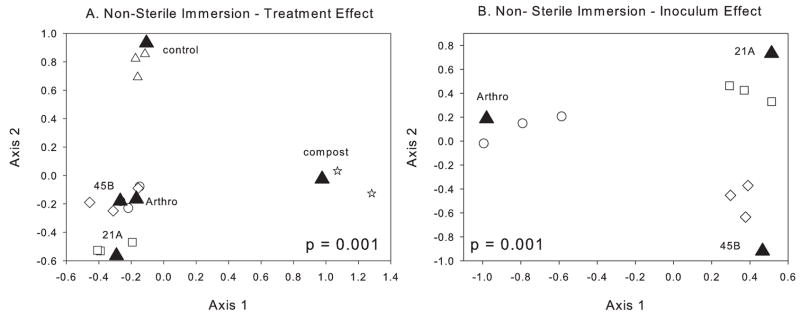Fig. 2.
Canonical correspondence analysis of triplicate DGGE bacterial community profiles from the B. dactyloides non-sterile immersion experiment. This experiment (DGGE gel) included 14 samples representing five treatments: treatment 1, triplicate rhizosphere samples from plants inoculated with Arthro Mix (○ Arthro); treatment 2, triplicate rhizosphere samples from plants inoculated with MTR-21A (□ 21A); treatment 3, triplicate rhizosphere samples from plants inoculated with MTR-45B (◇45B); treatment 4, triplicate rhizosphere samples from uninoculated control plants (△ Control); and treatment 5, duplicate samples from the compost prior to mixing with the tailings (⋆Compost). The filled triangles (▲) represent the CCA centroid for each treatment. (A) Non-sterile immersion experiment examining treatment effects among all fourteen samples. (B) Non-sterile immersion experiment examining inoculum effects among the nine inoculated samples (Arthro-inoculated, 21A-inoculated, and 45B-inoculated) only. Following CCA, for each analysis, a permutation test was performed (1000 permutations) to test whether there was a significant treatment effect (panel A) or inoculum effect (panel B).

